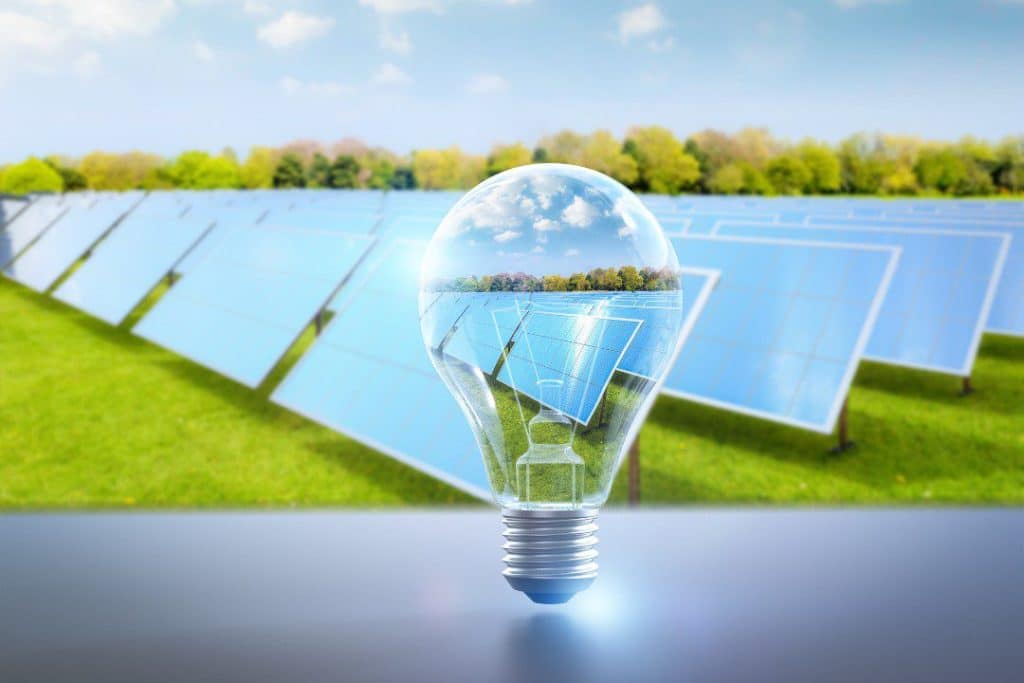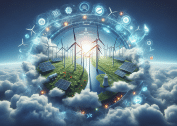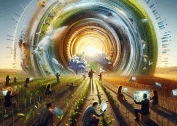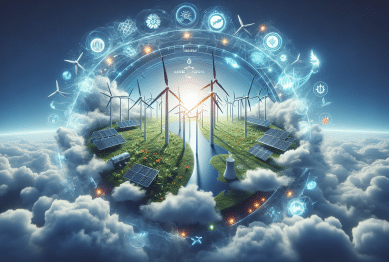The emerging renewable energy trends 2025 are more than buzzwords; they signal a rapid global transformation in how we produce, distribute, and consume power. Driven by policy, innovation, and climate needs, these trends are set to transform global energy systems. In this article, we explore six of the most impactful movements reshaping global energy in 2025.

Solar Power Is Growing Faster Than Ever
Among all renewable technologies, solar energy continues to surge ahead. In 2024 alone, over 600 gigawatts (GW) of new solar capacity was installed globally. This sharp rise, combined with significant advances in solar panel efficiency and falling costs, positions solar as the primary driver of clean energy expansion in 2025.
This trend is not confined to sunny regions. Countries like the United Kingdom have already surpassed their 2024 solar electricity generation totals by mid-2025. With advanced grid tools and bold national targets, solar is set to dominate new global electricity generation by late 2025 (Ember, 2025).
In emerging markets, large-scale solar farms are being built at record pace, often integrated with battery storage to ensure a stable power supply even after sunset. Solar is no longer just a green alternative—it’s a foundational piece of the modern grid.
Renewable Energy Becomes Cheaper Than Fossil Fuels
Cost has long been a deciding factor in the global energy mix. In 2025, renewable energy—especially wind and solar—is projected to be 61% cheaper than electricity from natural gas (Department for Energy Security and Net Zero, 2024).
This dramatic cost advantage is pushing utilities and governments to rapidly abandon fossil fuel-based systems.
This shift is supported by economies of scale, competitive auctions, and improved technology. In fact, the levelized cost of electricity (LCOE) for solar and wind is now consistently below that of coal or gas in over 80% of global markets. This pricing trend makes renewables not only environmentally superior but also economically unavoidable.
With energy prices continuing to fluctuate due to geopolitical instability, renewable energy offers a long-term, price-stable alternative that appeals to both consumers and businesses.
Agrivoltaics and Floating Solar Maximize Land Efficiency
Agrivoltaics, a rising 2025 innovation, combines farming and solar panels, enabling crop growth under raised arrays while generating clean energy.
In the United States alone, over 500 agrivoltaic projects are now active, contributing approximately 9 GW to the national grid while supporting local agriculture. This model is especially appealing in regions where land availability is limited or expensive.
Another innovative trend is floating solar. Instead of occupying valuable land, these panels are deployed on reservoirs and lakes. Floating solar systems enjoy natural cooling, which increases panel efficiency, and they reduce evaporation from the water bodies they cover. In countries with high population density and limited open space—like Japan or the Netherlands—floating solar is becoming a vital part of energy strategy.
These technologies showcase how renewable energy can coexist with other vital land uses, making them highly sustainable in the long run.
Hydrogen Emerges as a Clean Fuel Alternative
While solar and wind dominate electricity generation, hydrogen is becoming the go-to solution for decarbonizing sectors that are hard to electrify—such as heavy industry and transportation.
India, for example, inaugurated its second green hydrogen plant in 2025, integrating hydrogen production with natural gas pipelines. This facility is part of a broader push to reduce the country’s reliance on imported fuels and transition to self-sufficient, clean alternatives.
Green hydrogen is produced using renewable electricity and water, releasing no carbon emissions. Though the technology remains expensive, economies of scale and government incentives are rapidly bringing down costs. Experts see 2025 as a turning point where global investment in hydrogen infrastructure—such as pipelines, storage facilities, and electrolysers—begins to rival traditional fossil fuel infrastructure.
Hydrogen is not yet mainstream, but its potential in transforming industrial emissions and powering clean public transportation makes it one of the most watched technologies in the energy sector.
AI and Smart Grids Are Revolutionizing Energy Management
One of the most exciting emerging renewable energy trends 2025 is the integration of artificial intelligence (AI) into power systems. AI algorithms are now widely used to forecast energy demand, optimize energy storage, and manage grid loads in real-time. This digital intelligence helps prevent blackouts, improves efficiency, and supports the integration of intermittent renewable sources like wind and solar.
Smart grids—enhanced by AI and Internet of Things (IoT) devices—allow for decentralized energy management. Consumers can become “prosumers,” generating their own power via rooftop solar and feeding excess electricity back to the grid.
Blockchain technology also plays a growing role, enabling transparent and secure energy trading between households, communities, and corporations. As more homes and businesses install battery systems and solar panels, these peer-to-peer networks will become essential to the future of power distribution.
Powershoring: Manufacturing Meets Clean Energy
Powershoring is a strategy where energy-intensive industries move to regions with cheap, abundant clean energy like Canada or Scandinavia.
This strategic shift helps reduce carbon footprints and shields companies from volatile fossil fuel markets. Powershoring also aligns with environmental, social, and governance (ESG) goals, making it attractive to investors and regulators alike.
For host nations, this trend can be a powerful economic driver, bringing jobs and investment to regions that have invested early in clean energy infrastructure.
Conclusion
The emerging renewable energy trends 2025 reflect a deeper transformation in global energy systems. Solar energy continues to outpace all others in growth and adoption. Renewable costs are falling faster than anticipated, leaving fossil fuels behind. Smart land strategies like agrivoltaics and floating solar reshape energy production. Hydrogen aids non-electric sectors; AI and blockchain transform energy management. And through powershoring, companies are aligning their operations with clean energy access.
As these trends continue to evolve, they present both opportunities and challenges. Policymakers, investors, and consumers alike must adapt quickly to ensure that the clean energy future is both efficient and equitable.
References:
- Ember (2025) Global Electricity Review 2025. Available at: https://ember-climate.org (Accessed: 20 August 2025).
- Wikipedia (2025a) Agrivoltaics. Available at: https://en.wikipedia.org (Accessed: 20 August 2025).
- Financial Times (2025) UK Solar Generation Soars Past 2024 Total by August. Available at: https://www.ft.com (Accessed: 20 August 2025).









